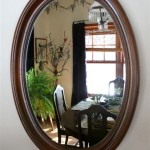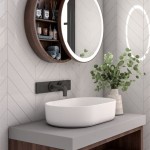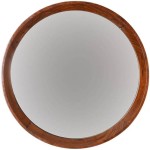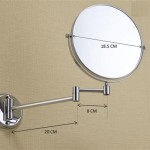DIY Mirror Vanity Tray: Elevating Your Décor with a Personal Touch
A mirror vanity tray serves as both a functional organizer and an aesthetic enhancement to dressing tables, bathroom counters, and even sideboards. Commercially available options range from simple to elaborate, but crafting a DIY mirror vanity tray allows for complete customization, cost savings, and a rewarding sense of accomplishment. This article provides a comprehensive guide to creating a personalized mirror vanity tray, outlining essential materials, step-by-step instructions, and creative customization ideas.
### Understanding the Benefits of a DIY ApproachChoosing to create a mirror vanity tray offers several advantages over purchasing a pre-made one. The most significant benefit is the control over the design. Individuals can select the exact size, shape, materials, and embellishments to perfectly complement their existing décor. This tailored approach ensures that the tray seamlessly integrates into the chosen space and reflects their personal style. Furthermore, DIY projects often prove more economical. By sourcing materials independently, it is possible to create a high-quality, visually appealing tray at a fraction of the cost of a comparable store-bought item. The act of creating itself is also a valuable aspect. DIY projects provide a creative outlet, foster problem-solving skills, and result in a unique, handcrafted piece that holds personal significance.
### Gathering Essential Materials and ToolsThe success of any DIY project hinges on having the right materials and tools readily available. For a mirror vanity tray, the core components include a mirror, a base, adhesive, and edge embellishments. The mirror is the focal point, and its size and shape will dictate the overall tray dimensions. Options range from square and rectangular mirrors to round or oval shapes. The base provides structural support and can be constructed from wood, metal, or even repurposed materials like sturdy cardboard or plastic. Adhesive is crucial for securely attaching the mirror to the base. Mirror adhesive is specifically formulated to prevent damage to the reflective surface and should be used. The edge embellishments add the finishing touch and can include decorative trims, beads, rhinestones, or even paint. In addition to these core materials, several tools are necessary for accurate cutting, measuring, and assembly. These include a measuring tape or ruler, a craft knife or saw (depending on the base material), sandpaper (if using wood), a pencil, and safety glasses. For applying adhesive evenly, a caulking gun or applicator may also be helpful.
### Step-by-Step Construction of a Mirror Vanity TrayThe construction process involves several key steps, starting with preparing the base and the mirror. The base should be clean, dry, and free of any loose debris. If using a wooden base, sanding it smooth will improve the adhesion of the mirror. The mirror should also be cleaned with a glass cleaner to remove any fingerprints or smudges. Accurately measure the mirror and mark the dimensions on the base. This will serve as a guide for precise placement. Apply the mirror adhesive to the back of the mirror in a consistent pattern. This could be a series of evenly spaced dots, lines, or a complete covering, depending on the manufacturer's recommendations. Carefully position the mirror onto the base, aligning it with the marked dimensions. Apply gentle, even pressure to ensure a strong bond. Allow the adhesive to cure completely, following the manufacturer's instructions. This may take several hours or even overnight. Once the adhesive has cured, the edge embellishments can be applied. Use a strong craft glue or adhesive appropriate for the chosen embellishment material. Carefully apply the trim around the perimeter of the mirror, ensuring a clean and even application. Secure the embellishments with clamps or tape until the adhesive has dried completely. Finally, inspect the tray for any imperfections or loose pieces. Make any necessary adjustments or repairs before using the tray.
### Customization Ideas for a Unique Vanity TrayThe basic construction process provides a foundation for endless customization possibilities. The choice of mirror is a primary area for personalization. Consider using an antique mirror for a vintage aesthetic, or a tinted mirror for a modern look. The shape of the mirror can also be used to create a unique design. A heart-shaped mirror can add a romantic touch, while an asymmetrical shape can create a more contemporary feel. The base material also offers opportunities for customization. A wooden base can be painted, stained, or even decoupaged with decorative paper or fabric. A metal base can be polished to a high shine or painted with a metallic finish. The edge embellishments are another key area for personalization. Decorative trims, beads, rhinestones, and even seashells can be used to create a unique and eye-catching design. Consider using colors and materials that complement the existing décor of the room. Furthermore, consider adding functional elements, such as small compartments or dividers, to organize smaller items like jewelry or makeup brushes. Adding a fabric lining to the base can also protect delicate items from scratches. The possibilities are limited only by imagination and creativity.
### Considerations for Material SelectionThe selection of appropriate materials is paramount to the longevity and aesthetic appeal of the finished vanity tray. The mirror quality directly impacts the overall appearance. Opting for a higher-quality mirror with a thicker glass and a clearer reflection will enhance the finished product. When selecting a base material, consider the weight of the mirror and the intended use of the tray. A heavy mirror will require a sturdier base. Wood is a popular choice for its durability and versatility, but it is essential to select a wood that is not prone to warping or cracking. Metal offers a more contemporary look and is also very durable, but it can be more challenging to work with. Cardboard is a cost-effective option for smaller, lightweight trays, but it is not as durable as wood or metal. The adhesive is a critical component and must be specifically designed for use with mirrors. Using the wrong adhesive can damage the mirror's backing and cause discoloration or even cracking. Choose an adhesive that is compatible with both the mirror and the base material. When selecting edge embellishments, consider the overall aesthetic of the tray. Choose materials that complement the mirror and base materials. Avoid using embellishments that are too heavy or bulky, as they can put strain on the adhesive and cause them to detach over time.
### Safety Precautions During ConstructionDIY projects involving cutting, gluing, and the use of potentially sharp objects require careful attention to safety. Always wear safety glasses when cutting or sanding materials to protect the eyes from flying debris. Use a craft knife or saw with caution, and always cut away from the body. When working with adhesive, ensure adequate ventilation to avoid inhaling fumes. Follow the manufacturer's instructions for proper application and curing times. Avoid getting adhesive on your skin or clothing, and wash thoroughly with soap and water if contact occurs. When using power tools, such as a sander or drill, follow the manufacturer's safety guidelines. Wear appropriate protective gear, such as a dust mask and earplugs. Keep the work area clean and organized to prevent accidents. Dispose of waste materials properly, following local regulations. If using glass, handle it with extreme care to avoid cuts or breakage. Wear gloves when handling glass, and dispose of any broken pieces safely. If a cut occurs, clean the wound thoroughly and seek medical attention if necessary. By following these safety precautions, it is possible to enjoy the DIY process while minimizing the risk of injury.
### Troubleshooting Common IssuesEven with careful planning and execution, some common issues may arise during the construction of a mirror vanity tray. One common problem is the mirror not adhering properly to the base. This can be caused by using the wrong type of adhesive, not applying enough adhesive, or not allowing the adhesive to cure completely. Ensure that the correct adhesive is used and applied in a generous and even pattern. Apply firm pressure to the mirror after placement and allow it to cure for the recommended time. Another common issue is the edge embellishments not staying in place. This can be caused by using the wrong type of glue, not preparing the surface properly, or using embellishments that are too heavy. Ensure that a strong craft glue compatible with the embellishment material is used. Clean the surface thoroughly before applying the glue, and use clamps or tape to hold the embellishments in place until the glue has dried completely. Uneven edges or gaps between the embellishments can also be problematic. Take careful measurements and cut the embellishments accurately. Use a miter box or similar tool to create precise angles for corner pieces. If gaps occur, fill them with a small amount of glue or caulk that matches the color of the embellishments. If the mirror becomes scratched or damaged during the construction process, it may be possible to repair it with a mirror repair kit. These kits typically contain a special compound that fills in the scratches and restores the reflective surface. However, severe damage may require replacing the mirror entirely.

Dollar Tree Diy Mirrored Tray Vanity

How To Make A Mirror Tray Diy Projects Craft Ideas S For Home Decor With

Dollar Tree Diy Room Decor Mirror Vanity Tray Perfume

Diy Mirrored Jewelry Tray Easy Picture Frame Upcycle Girl Just

How To Make A Mirror Tray Diy Projects Craft Ideas S For Home Decor With

Dollar Tree Diy Mirror Vanity Tray Perfume

Dollar Tree Diy Mirrored Tray

You Won T Believe How Easily And She Makes This Lovely Mirrored Vanity Tray

Diy Round Mirrored Vanity Tray How To Make A Home Decor Mirror

Diy Footed Vanity Tray Homey Oh My








